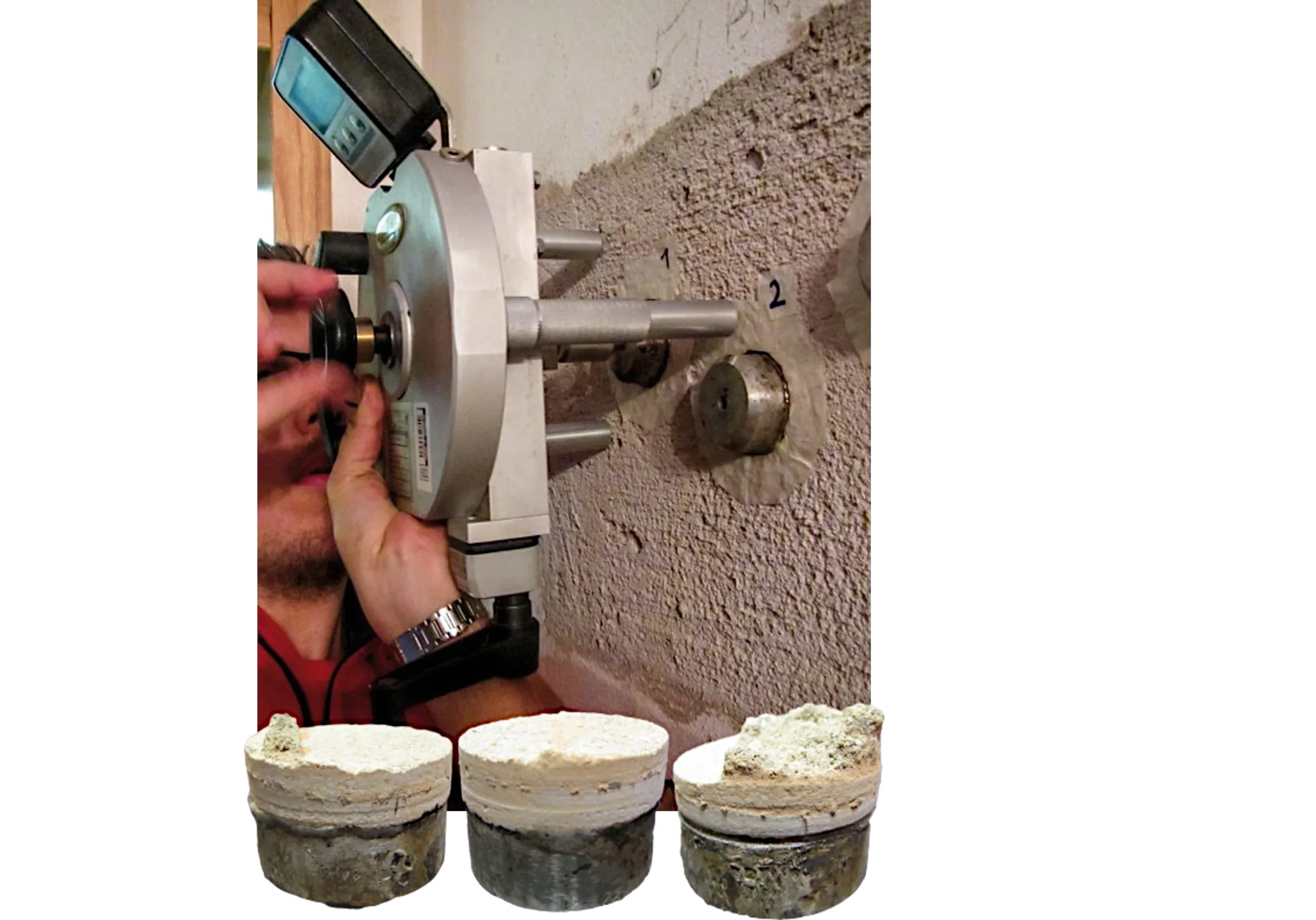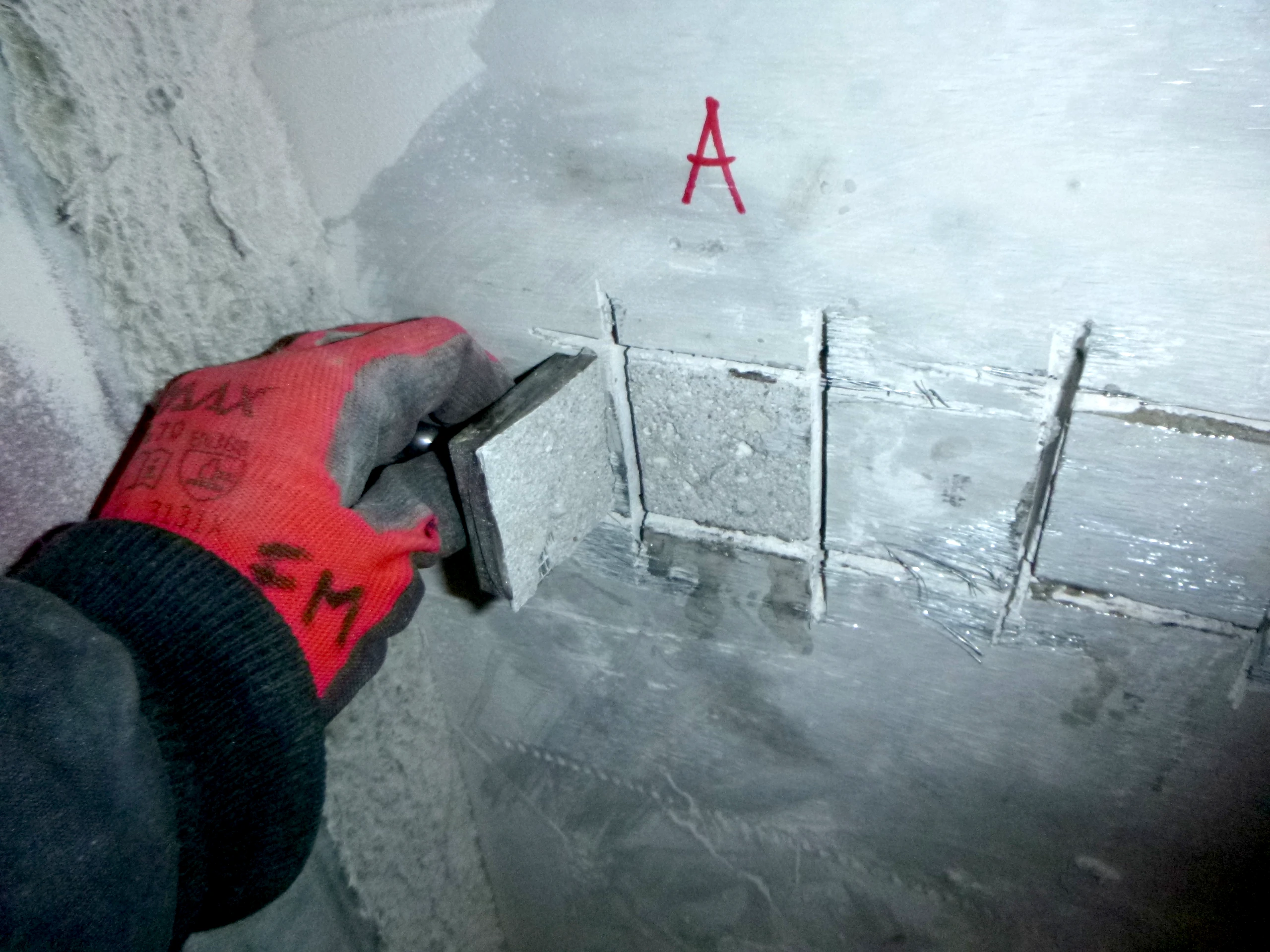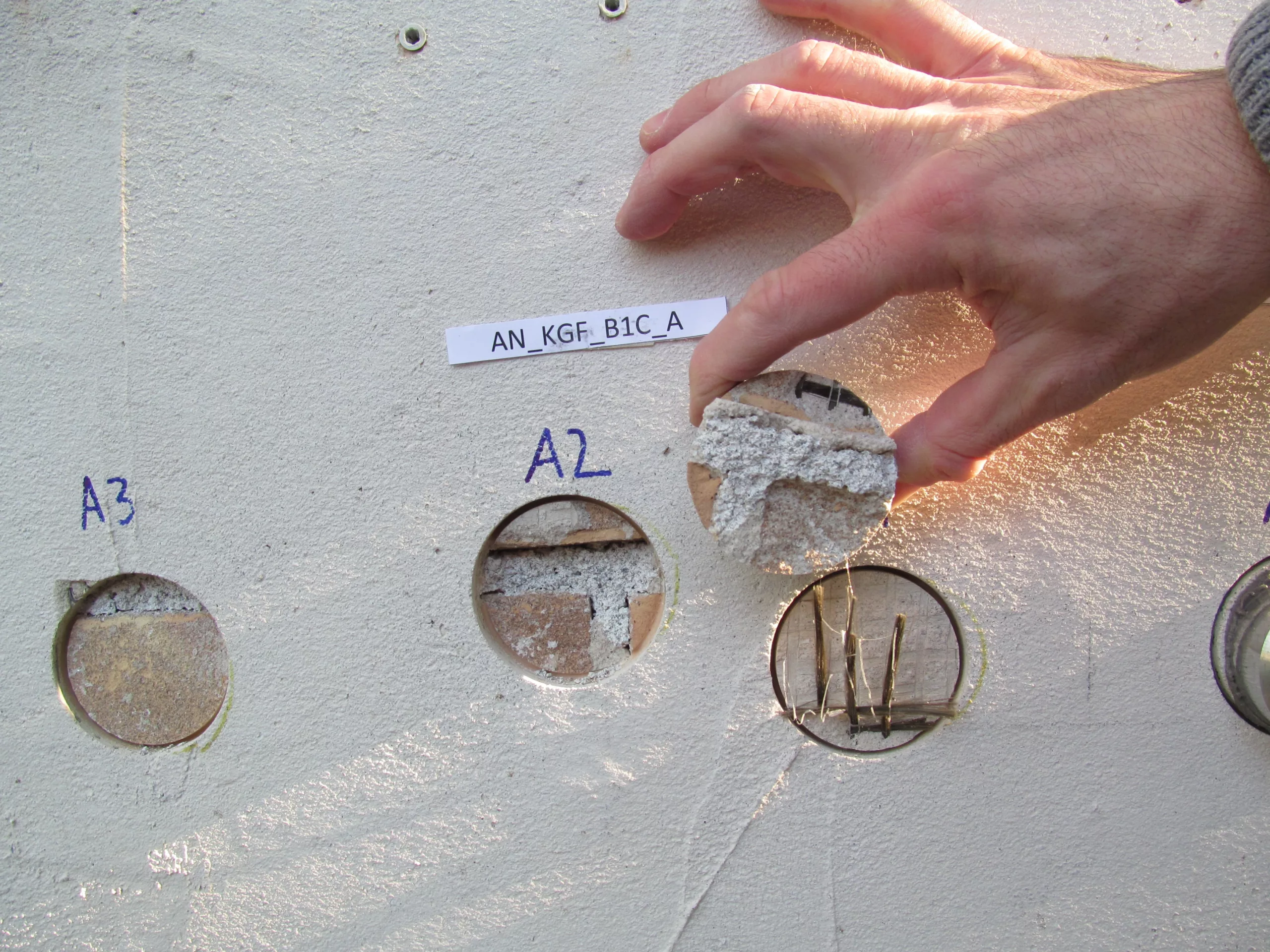


Pull-off test
The pull-off test is a minor destructive investigation technique that allows the measurement of the tensile strength or tear resistance of a material applied to a substrate, such as wall coverings (finishing mortars, plasters, seismic strengthening systems or other). This test is carried out by making a circular cut of 50 mm diameter on the surface of the material to be tested, to a depth at least equal to the thickness of the coating, using a circular drill bit or a grinder, to isolate the area subject to investigation. The tests is carried out by gluing a metal disk on the isolated surface, and then a traction force is applied perpendicularly to the surface using a jack equipped with a calibrated pressure gauge, until the detachment occurs on the contact plane between the structural layers, or on the substrate.
Reference standards: ASTM D7234-12, ASTM D4541-17, ASTM C1583-04; UNI EN ISO 16276-1:2007; UNI EN 1015-12:2016; UNI EN 1542:2000; UNI EN 12636:2001; CNR-DT 200 R1/2013; CNR-DT 215/2018.
